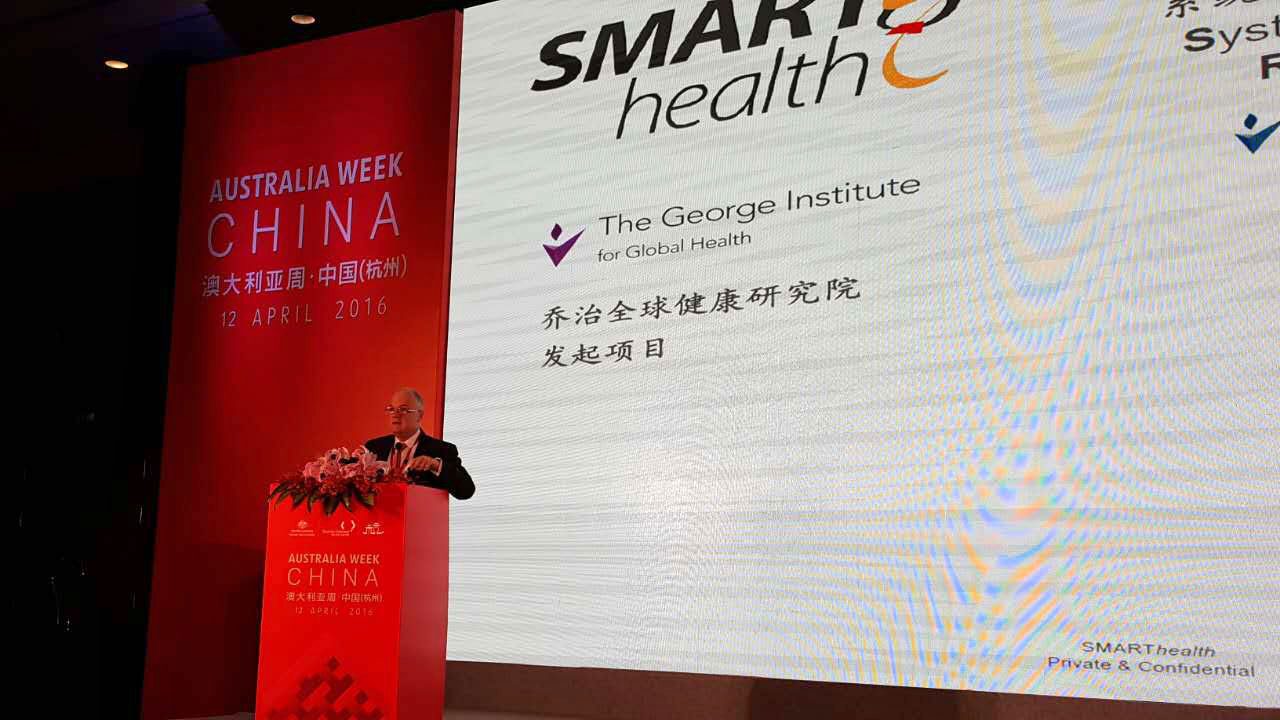
Delivering benchmark healthcare solutions at Australia Week in China
11 to 15 April 2016 marks the second Australia Week in China (AWIC) with the largest-ever business delegation from Australia, led by its Minister for Trade and Investment, visiting China and delivering eight sector-specific programs across a number of cities to highlight commercial opportunities underpinned by the China Australia Free Trade Agreement (ChAFTA).
The George Institute for Global Health, a not-for-profit medical research institute based in Sydney with centers in China, India and the UK, is honored to have been invited to participate in AWIC2016 and present a keynote speech to introduce Australian expertise and innovation in healthcare services and delivery.
Australia’s healthcare system is highly regarded around the world for providing cost effective, equitable and high quality services for its people and is viewed as ripe for adaptation by a centrally planned economy such as China’s, which has a rapidly aging population and a growing burden of chronic disease.
The Chinese Government’s commitment to improving the quality, outcome, accessibility and affordability of healthcare is creating a booming health and aged care industry, which is increasingly looking for solutions from the technological and digital market.
On April 12, clinician scientist Professor Craig Anderson from The George Institute for Global Health, spoke at a special seminar focusing on new trends and innovation in healthcare, aged care and technology in the city of Hangzhou.
Professor Anderson introduced an advanced and affordable healthcare solution for both users and providers developed by The George Institute. The Systematic Medical Appraisal Referral and Treatment or SMARThealth program is already helping millions of people at high-risk of premature death or disability in Australia and India.
From 1990 to 2013, chronic diseases like stroke, heart attack and cancers have risen to become the leading causes of premature death in China. However the rates of control and treatment of such diseases still remain low.
“One of the problems facing not only China but also Australia is the massive complexity generated by multiple guidelines for clinical care,” said Professor Anderson.
“For example, patients with cardiometabolic diseases may have more than one condition which can possibly lead to hundreds of clinical decisions and recommendations. However, the average consultation time in a Chinese hospital outpatient department is only five minutes which is really not a satisfying result for either the patient or the doctor.
"SMARThealth System was thus built and tested with the aim of providing an ‘ecosytem’ for the management of chronic diseases, from screening, assessment and diagnosis to treatment, monitoring, follow-up and data analysis, covering the patients and healthcare workers and enabling results sharing for doctors and other carers. It will be further developed to bring together larger scopes of diseases and parties,” Professor Anderson said at the seminar.
“China and Australia do share some similarities in demographics and healthcare despite the differences in population size and wealth, meaning that these two countries can definitely learn from each other,” Professor Anderson continued. “The SMARThealth program can be a competitive role model and bring transformational improvement in essential healthcare to this nation. We are looking forward to more and more collaborations in the future from this point with the ChAFTA officially entered into force.”

